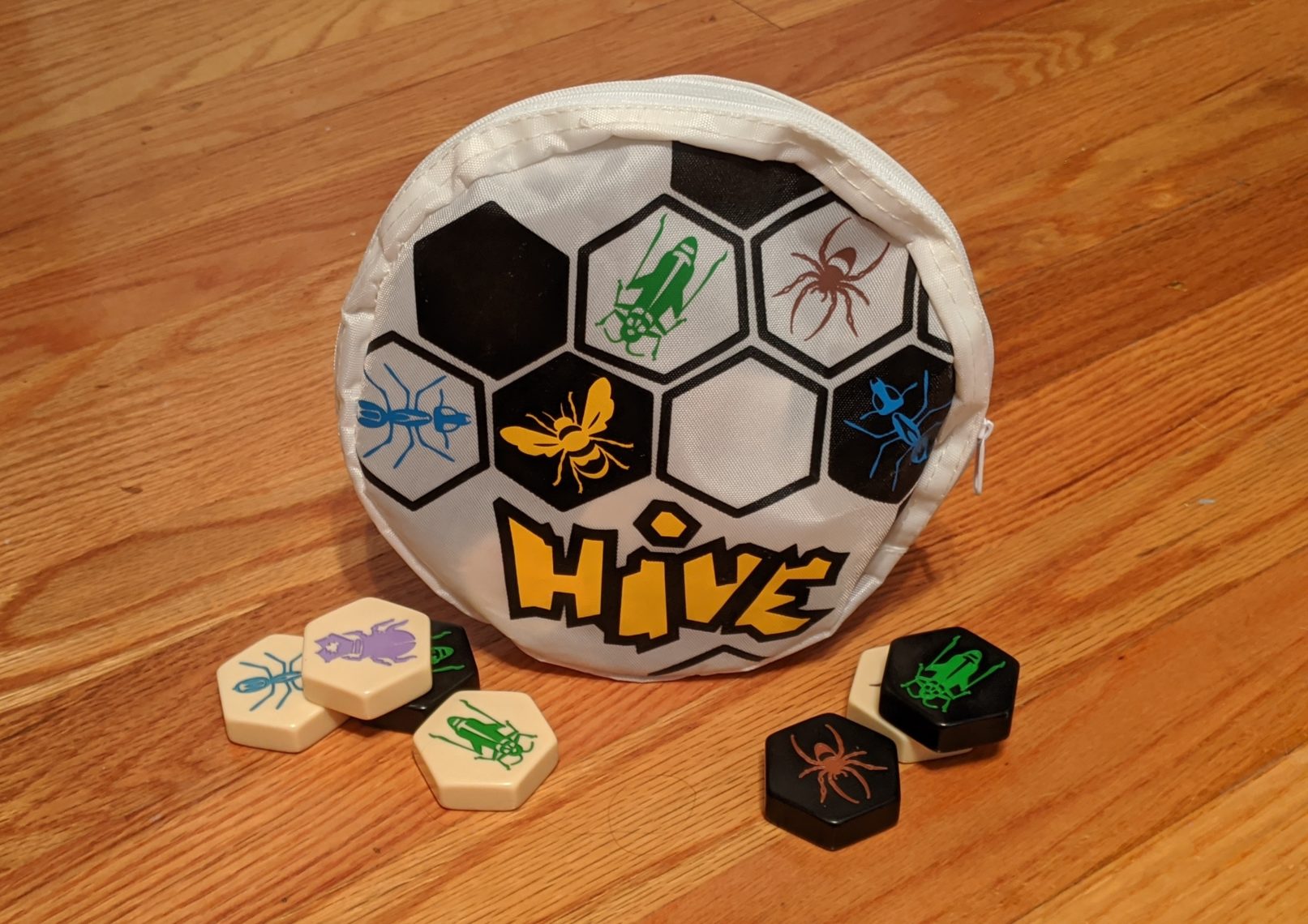The great outdoors was not designed with board gaming in mind. This, however, is a problem space worth navigating.
The tag team of wind and wetness can ruin any outdoor game day, whether via a stiff breeze, an unexpected shower, or the moisture from a frosty beverage. What you need is a nearly indestructible game piece. You need Bakelite.
Well, maybe not exactly Bakelite. That name denotes a specific chemistry of the world’s first synthetic-component plastic. Yet the name lives on as a general descriptor for objects of an almost-ceramic nature, chunky pieces that make a distinctive *clack* when smacked together. You’ve probably encountered it in dominoes, mahjongg, or your grandmother’s telephone.
Today’s Bakelite look-alikes use phenolic resins that provide all of the expected benefits: stability in extreme heat, imperviousness to moisture, and weight enough to resist a strong wind. In short: the perfect outdoor game piece. That is, unless you desire an accurate 1/24th scale representative of a half-elf rogue. That sort of detail poses a challenge for this family of resins, so most of these gaming options will require you to embrace a love of abstract strategy. Let’s dive in.
Hive

The gold standard of outdoor and portable games, Hive is a straightforward two-player battle of the bugs. Players move hex-shaped tiles in a freeform grid with a single goal: trap the opposing queen. Each tile takes on the movement rules of a different bug, making Hive a bit of a chess game. Keep it in your pocket (or get the even smaller pocket edition!) for a perfect addition to your next socially distanced picnic.
Bananagrams

One of the most widely-played word games also happens to be the most portable and durable. One banana full of tiles is all it takes for a fast-paced word-building race. Although perhaps not the greatest option for current times (Bananagrams takes up to 8 players and it’s real-time nature means everyone will be leaning in on a central playspace), it can still be a solid option at lower player counts.
No Return

Full disclosure: this one might be a bit harder to come by as a sleeper hit released at Spiel 2019 and currently lacking North American distribution. Regardless, No Return is another great freeform tile game worthy of inclusion here.
The experience of playing No Return is purely abstract, requiring only a bag of tiles embossed with numbers. Players engage in a game-long push-your-luck challenge, playing tiles from their hand into a tableau of future victory points. Later, players will individually opt to permanently switch to a secondary game mode, where turns focus solely on spending tiles to lock in the tableau’s points (or risk penalties for tiles initially played but never scored). The game doesn’t overstay its welcome, and the tension of when to switch game modes is palpable during every play.
Confusion: Espionage and Deception in the Cold War
By far the most complex entry on this list, Confusion remains an easy-to-learn abstract game. Loosely themed as a Cold War spy-vs-spy chess game, Confusion challenges you to deduce your piece’s movement abilities. Each move is announced as a question to your opponent, who holds the knowledge of your piece’s movement abilities. Your opponent will respond with news of whether the intended move is legal… unless the piece in question is the one they can lie about.
It doesn’t sound like much, but the production values truly sell the experience. Each player uses a dry-erase folio to track accrued knowledge of both themselves and their opponent, and the game retains replay value through reconfigurable player pieces. These pawns exist as nested pairs, with movement rule inserts placed with the labeled resin outer shells.
Confusion flew a bit under the radar when it was originally published, but everything adds up to an experience I’d previously awarded with “Game of the Year” honors back in 2011.
Azul copes happily with a bit of wind. You might need to replace the score cubes, and maybe the factories, but the tiles are fine.
A little older, but Tantrix, Trax and Triominoes work too.
Totally agree about Azul. And the others you mention are all excellent suggestions for outdoor play–but their pieces are plastic, not bakelite, so technically that’s a whole other article 🙂
Yes you’re quite right about standard Triominoes – I have a fancy set which if not Bakelite is something very similar, but generally they are plastic.
Tantrix is definitely Bakelite though, and I’m pretty sure the Trax pieces are the same – same company.